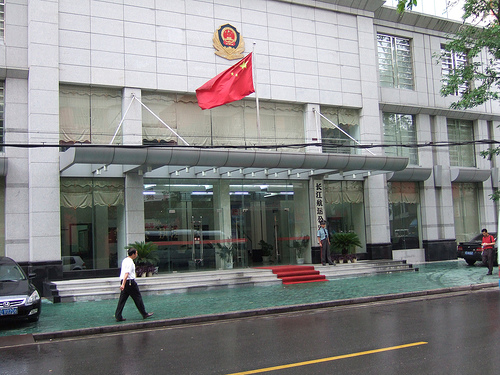I believe that a greater risk lies in the financial system, which means hard-earned savings of ordinary Chinese households are at stake. Additionally, debt burdens constrain the capacity of the already cash-strapped local governments to provide essential public goods and services. This underscores several endemic problems with China’s financial and fiscal systems. These fundamental problems deserve far more attention than the current public-debt level.
The recent surge in local government debt is triggered by the central government’s massive economic stimulus program. In the midst of a global economic downturn in late 2008, the central government announced a four-trillion yuan stimulus package to spend its way out of a recession. However, the central leadership only committed to funding one-third of the total package, leaving the rest to local governments and banks.
Most local governments were not financially capable of paying for the stimulus program. Therefore, they set up as many as 8,000 investment platforms to obtain bank loans, circumventing the law prohibiting local governments from directly borrowing from banks. Lands are used as collateral for these loans. Financial returns to infrastructure investments typically involve long gestation periods, and most of these investments were not justified in the first place if not for the purpose of pump-priming the economy. The burden of debt repayment ultimately falls on the shoulders of local authorities.
What is often overlooked is that many local governments were already quietly accumulating debts prior to the fiscal stimulus. Yet most analysts portray this as a recent phenomenon. China has a highly decentralised fiscal structure, despite its centralised political system. The World Bank describes China as one of the most decentralised countries in the world, measured by the proportion of public goods and services provided directly by subnational governments. While local governments, particularly grassroots (county and township) authorities, are responsible for the bulk of goods and service provision, they have few stable revenue sources to count on.
This lopsided revenue-expenditure distribution was exacerbated by the 1994 fiscal recentralisation policy that raised the central government’s claim to taxes relative to subnational governments. At the same time, the policy left the expenditure rules between the centre and local authorities largely unchanged. The pressure on local governments to co-finance the pump-priming efforts further rubs salt on their existing wounds.
Ordinary Chinese, particularly those in poor regions, are the biggest losers when their local governments’ dwindling revenues are allocated to interest payments. Prefecture, county and township governments are responsible for funding a range of essential services, such as basic education, healthcare (even the new insurance scheme requires co-contribution by local governments), sanitary and other basic amenities. Before the onslaught of the recent financial crisis, ‘hollowing out’ of grassroots governments was already occurring—some authorities were so deprived of revenue to the extent that they were incapable of carrying out day-to-day functions, such as paying for salaries of government officials, teachers or healthcare workers, or building or refurbishing worn-out schools and hospitals.
To be sure, highways, bridges and other infrastructure projects bring benefits to local residents by fostering economic and transport linkages with neighbouring areas. However, there is an inherent pecking order in development priorities—what’s the utility of a sparkling new asphalt highway when parents cannot afford to send their children to schools?
Escalating levels of local government debt means the banks’ non-performing loans are accumulating. Most local-government borrowers are still able to service their loans thanks to lucrative income from land-related transactions. But, the central government is implementing measures to slow down the property market, and speculations abound that rising property prices are bubbles waiting to burst. When local governments’ property-related income dwindles, banks will feel the pinch as bad loans pile up. This will hamper the banking system’s basic function, which is improving the efficiency of capital allocations by intermediating between savers and borrowers.
Massive bad debts also imply that the bulk of household savings are essentially lost. However, the collapse of banks is unlikely as long as depositors do not simultaneously rush to withdraw savings. More poignantly, there has been no major banking collapse in China because most banks carry explicit or implicit central government guarantee. Accordingly, the central government is compelled to bail the banks out when they are in trouble.
In the late 1990s, the central government pumped in 3.4 trillion yuan to help the four state-owned banks recapitalise and to erase bad debts. Granted, that was partly for the purpose of cleaning up the banks’ books before their market debuts. The recent massive borrowing from banks to finance the stimulus program effectively reverses the previous painstaking effort taken to clean up the banks. Soon, the central government will have to do it again. Although public debt in China maybe growing, it is nowhere near the levels registered in Greece, US or UK. The risk posed to the banking system will require more urgent action in the near future compared to the fiscal system.
This underlines the gross inefficiency and distributional consequences of China’s growth model. No country can keep growing by wasting household savings or using public money to clean up financial mess. Is this really the ‘Beijing Consensus’ that should be promoted or pursued?
Lynette Ong is Assistant Professor of Political Science at the Munk Center for Global Affairs based at the University of Toronto.

